The Postpartum Shed You Weren't Expecting
You have just brought new life into the world, and while your days are filled with baby snuggles, tiny fingers, and sleepless nights, you suddenly notice something disturbing in the mirror—your hair is becoming scarce and both your hairbrush and drains are filling with strands.
After the miracle of childbirth, postpartum hair loss can be disheartening when a mother's body is already in a state of flux. But the truth is… You are not alone. This is a normal part of the postpartum experience, and most women experience some type of hair loss in the months following childbirth. If you are suffering from hair loss, whether due to genetics or any other reason, the good news is that there are safe and natural ways to handle it.

Why Does Hair Fall Out After Having a Baby?
Postpartum hair loss is the result of a short-term condition known as telogen effluvium. To understand it, let’s rewind to your pregnancy.
Your hair spends more time in the anagen (growth phase) of your hair cycle when you're pregnant, thanks to all those extra estrogen hormones[1]. That's why you will find that many women notice their hair is thicker and shinier during pregnancy (fewer strands are shedding, and more are growing).
However, once you give birth, your estrogen plummets. This abrupt hormonal change induces an excessive number of follicles to go into the telogen (rest) phase simultaneously. Eventually, about two to four months later, those resting hairs will fall out all at once, which is why your hair might feel like it’s “falling out in clumps.”
The good news? Remember, this is only a phase, and your hair follicles are not damaged. They just need the right conditions and nutrients that stimulate hair regrowth. This is where red light therapy enters.
A Gentle Light for Natural Hair Regrowth
Red light therapy is well-known as a scientifically validated natural answer for skin, scalp, and restoring postpartum hair loss.
The red light therapy applies particular wavelengths of natural light—primarily in the red (630–660 nm) and near-infrared (810–850 nm) ranges. RLT offers wavelengths that are safe, painless, and can penetrate to the appropriate levels for activating cells in the hair follicle roots[2][3].
Red light therapy is a 100% drug-free and chemical-free treatment, so it is an appealing option for new mothers looking to stimulate hair growth naturally without introducing themselves or their newborns to the harsh chemicals!
How Red Light Awakens Your Hair Follicles?
Those hair follicles beneath your scalp resemble small factories. All three of these cycles switch between the active hair production (growth phase) and rest (shedding phase). After childbirth, many of these “factories” go on break, and red light therapy is like flipping the “back to work” switch[4].
Thanks to the safe, precise red and near-infrared wavelengths from the LED light therapy panels, they penetrate deep enough to be absorbed by your cells' mitochondria, which are in charge of producing energy (ATP). With more energy available to your follicles, they can:
- Return to the anagen (growing) phase more quickly, which creates fresh strands
- Enhance blood circulation in the scalp, providing more oxygen and nutrients to reach the roots directly.
- Decrease inflammation around the follicle, creating a hair growth-friendly environment.

A Safe and Worry-Free Solution for New Mothers
One of the biggest concerns of postpartum women is: Is it okay to use RLT while breastfeeding?
Fortunately, the answer is reassuring. As it is an external treatment with light, no chemicals, hormones, or medications enter your bloodstream or breast milk. There is no systemic effect—the light simply interacts with the skin and tissue beneath it.
Red light therapy is generally regarded as safe for postpartum women, so long as the safety guidelines of the device are followed properly. If you have any worries, a brief conversation with your doctor can provide you with additional safety assurance.
Your At-Home Ritual for Thicker Hair
You do not have to schedule those expensive salon appointments to get the benefits of red light therapy. A variety of high-quality at-home devices are available for personal use, including tabletop panels.
A typical at-home routine looks like this.
- Frequency: 3–4 times a week.
- Duration: 15–20 minutes per session.
- Distance: Panels need to be placed at a comfortable distance from the scalp.
- The key is consistency: Consider it a nurturing self-care ritual, not a medical treatment.
Patience and Progress: What to Expect on Your Journey
Hair growth is naturally a slow cycle, so it is important to have realistic expectations and expect gradual progress. Here is a general timeline that many users report:
- Weeks 4–6: You may see reduced hair shedding. There is less hair in your hairbrush and shower drain.
- Months 2–4: Small fine ‘baby hairs’ begin growing for the first time around the hairline or part line.
- Months 6–9: Noticeable thickening or increased number of hair strands in areas where no or very few hairs were growing.
It is important to remember that the actual hair cycle can vary from person to person and also depends on your health condition, genetics, and treatment adherence.
Supporting Hair Growth from Within
Even though red light therapy is an excellent component to postpartum hair recovery, it needs to be paired with other treatments. Here are a few other strategies for improving your hair’s chances of growing back:
- Have a well-balanced diet: Consume protein (eggs, fish, and lean meats), Iron-rich foods (spinach, lentils), and omega-3 fats in salmon or walnuts.
- Hydration: Good water balance promotes general cellular activity.
- Gentle hair care: Tight hairstyles, harsh heat styling, and rough brushing on wet hair are a few factors to avoid, as these can stress the hair shaft.
- Addressing stress: Postpartum can be a busy time, but deep breathing, short walks, or mindfulness exercises help decrease stress, which is associated with hair shedding.
Reclaim Your Confidence and Your Hairline
While postpartum hair loss is par for the pregnancy course, that doesn't mean you have to sit helplessly by and let it happen. Red light therapy offers a safe, natural, and proven way to get your hair follicles back into the active growth phase more quickly.
Incorporating it into your self-care regimen along with other beneficial practices, you will gradually have a fuller head of hair and renewed confidence. Motherhood comes with a lot of changes, and taking measures to achieve hair restoration can serve as an empowering step that you are still just you, just stronger, wiser, and even more radiant!
References
- Hirose, Asuka et al. “Investigation of exacerbating factors for postpartum hair loss: a questionnaire-based cross-sectional study.” International Journal of Women's Dermatology vol. 9,2 e084. 16 Jun. 2023, doi:10.1097/JW9.0000000000000084
- Avci, Pinar et al. “Low-level laser (light) therapy (LLLT) for treatment of hair loss.” Lasers in Surgery and Medicine vol. 46,2 (2014): 144-51. doi:10.1002/lsm 22170
- Pillai, Jisha K, and Venkataram Mysore. “Role of Low-Level Light Therapy (LLLT) in Androgenetic Alopecia.” Journal of cutaneous and aesthetic surgery vol. 14,4 (2021): 385-391. doi:10.4103/JCAS.JCAS_218_20
- Trivedi, M.K. et al. “A review of the safety of cosmetic procedures during pregnancy and lactation.” International Journal of Women's Dermatology, vol. 3,1, 6-10. 27 Feb. 2017, doi:10.1016/j.ijwd.2017.01.005



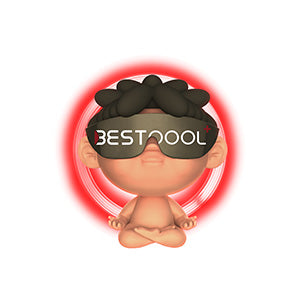








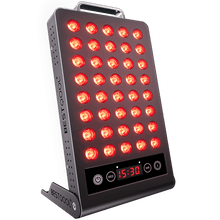
 Small
Small
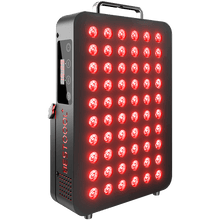
 Moderate
Moderate
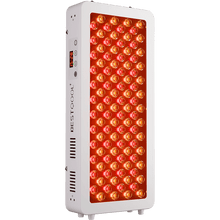
 Moderate
Moderate
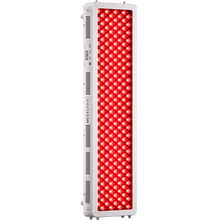
 Moderate
Moderate

 Full
Full



